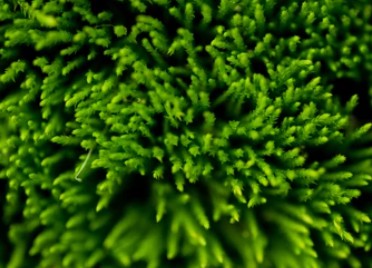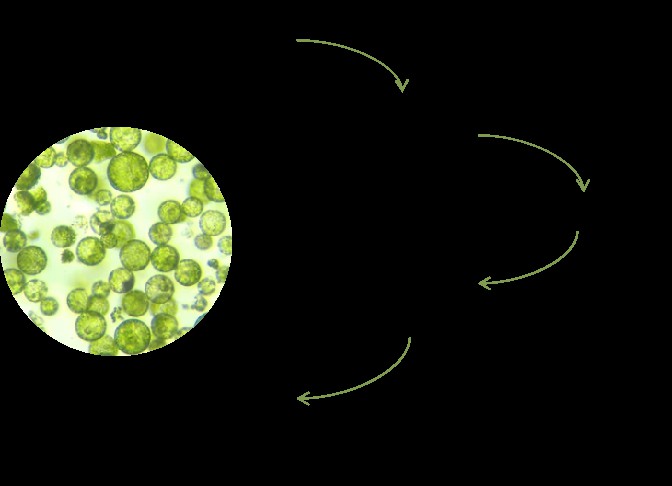Transformation of the Moss Physcomitrella patens
Physcomitrella patens has a relatively simple developmental pattern and short growth cycle, which is favorable for large-scale cultivation and mutant screening, and its life history generations are dominated by haploid gametophyte morphology, which facilitates the generation of mutations and direct analysis of genetic traits. Physcomitrella patens is used as a common model species for genetic transformation in mosses. Physcomitrella patens is one of the most common model species used for genetic transformation in mosses and plays a vital role in GMO research. Physcomitrella patens has a high frequency of homologous recombination, and it is easy to find related genes, which can save a lot of time for transgenic research in complex plants.
Lifeasible specializes in plant research, and we have many years of research and service experience in the study of Physcomitrella patens genetic transformation systems. Currently, we provide comprehensive and effective solutions in transformation methods for the Physcomitrella patens genetic expression system, aiming to maximize the utilization of this system for relevant researchers.

Transformation methods of Physcomitrella patens
- Polyethylene glycol (PEG)-mediated transformation of the moss Physcomitrella patens. Polyethylene glycol (PEG)-mediated transformation of protoplasts is a commonly used method in transforming Physcomitrella patens for introducing exogenous DNA into Physcomitrella patens cells. Moss Physcomitrella patens undergo efficient homologous recombination in the nucleus and plastids to study individual gene function by producing precise gene inactivation or modification. Polyethylene glycol (PEG)-mediated protoplast transformation is commonly used to study nuclear gene function in Physcomitrella patens. PEG-mediated protoplast transformation also applies to the plastid transformation of this Physcomitrella patens. The efficiency of plastid transformation is quite reliable, and one or two homogeneous trans-plastidic systems were obtained in plastid transformation experiments by selection for spectacular resistance.
- Gene gun method for transformation of moss Physcomitrella patens. DNA was introduced into Physcomitrella patens tissues. Using the gene gun method, protofilaments encapsulated in gold pellet bullets were shot into the protofilament tissues on cellophane using a gene gun, and then the transgenic protofilaments were mixed well and coated on a selective medium for screening. Compared with the PEG transformation method, the gene gun method requires only a tiny amount of DNA and has a higher transformation efficiency than the PEG method.
General steps for Physcomitrella patens transformation
- Grow and maintain Physcomitrella patens suspension cultures or mosses. These cultures provide the starting cellular material needed for genetic transformation.
- Prepare plasmid DNA. Insert the gene you want to transform into an appropriate plasmid. This plasmid usually includes a selection marker (e.g., antibiotic resistance gene) and the target gene you want to express.
- Prepare the transformants. To introduce the plasmid DNA into Physcomitrella patens cells, it is usually necessary to use a highly stable and permeable transformant, such as a mixture of Physcomitrella patens and plasmid DNA.
- Transformation method selection. Two common methods for transforming Physcomitrella patens cells are PEG-mediated protoplast transformation and the gene gun method.
- Selection of markers. After transformation, the transformed cells need to be screened for successful acceptance of plasmid DNA. Usually, this is accomplished by adding appropriate selection markers (e.g., antibiotics), and only cells with the selection markers will survive.
- Verify gene expression. Once you have obtained transformed Physcomitrella patens cell lines, you need to verify that the target gene is expressed in these cells. This can be done by molecular biology techniques such as PCR, RT-qPCR, or protein analysis.
- Further studies. Once the genetic transformation of Physcomitrella patens has been successfully carried out, the researcher can conduct further studies, for example, to investigate the target gene's function, biological response, or growth characteristics.

Physcomitrella patens has been increasingly valued as a promising model system for plant molecular biology research. Its short life-history cycle, easy cultivation, accessible analysis of transgenic plants, and easy homologous recombination of the nuclear genome with exogenous DNA make it a good material for studying gene function.
Lifeasible provides transformation methods for Physcomitrella patens, which can help researchers obtain Physcomitrella patens transformed plants and verify the characteristics of the transformed plants, which can be used to verify the gene function. If you are interested in us, please feel free to contact us.
For research or industrial raw materials, not for personal medical use!

